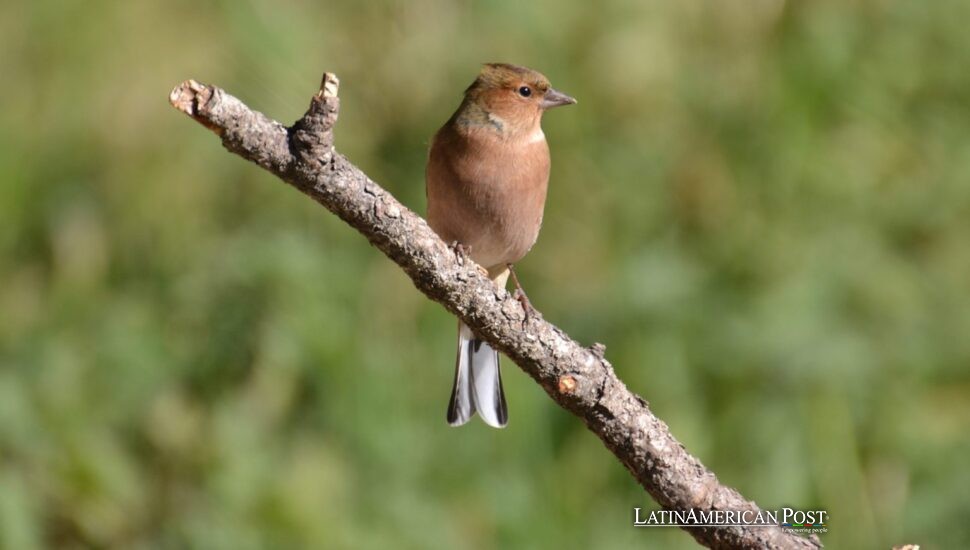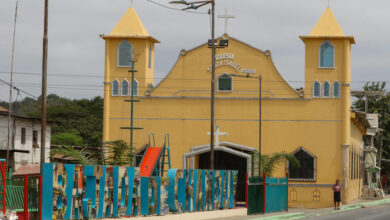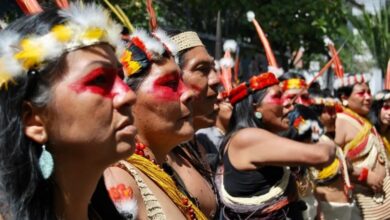Ecuador Celebrates New Finch Discovery Challenging Evolutionary Boundaries

In the highlands of San Cristóbal Island, scientists found signs of a different woodpecker finch species. The discovery sparked new discussions about Darwin’s studies. Modern DNA analysis methods led to this insight, which could affect protection plans for Ecuador’s remarkable Galápagos Islands.
Genomic Clues Reveal Hidden Distinctions
When a research team announced that the woodpecker finch on San Cristóbal Island might be a genetically distinct species, the broader scientific community took note. Despite decades of studying Darwin’s finches, new genomic techniques have offered an unprecedented view into the evolutionary mosaic of these iconic birds. For years, the standard classification listed the finches of Camarhynchus pallidus under three recognized subspecies. Yet the novel data indicate that one of those groups, explicitly found on San Cristóbal and now tentatively named Camarhynchus striatipecta, diverged from the others in ways that standard morphological comparisons never fully caught.
The DNA test results show how new methods find tiny variations in genetic patterns. Such differences match the way birds look or act inside certain places they prefer to live. Scientists now notice secret details about species through methods they did not have access to before. These discoveries help researchers understand connections between genes and physical traits of birds. The process makes it possible to track small shifts that affect how birds develop over time. Darwin’s finches have long been a poster child for evolutionary adaptation, known for quickly diversifying beak size and feeding habits in response to ecological pressures. Genome maps in high detail along with exact size records ‒ such as beak positions, weight, feather traits ‒ reveal a group distinct enough to qualify as its own species.
But the reason to sort them apart extends past DNA sequences: animals in the Galápagos adapt to local conditions at remarkable speed. Over centuries, these archipelagos, shaped by shifting climates and minimal predation, have enabled finches to drift into unique niches. Some prefer ground seeds, others seek insects by pecking in bark, and others even exploit twigs to fish for larvae. Researchers argue that if the birds on San Cristóbal Island show consistent differences in genetic markers—coupled with unique morphological or ecological habits—it is probable that reproductive isolation or limited gene flow has taken root. Over time, that isolation might lead to distinct evolutionary futures for each finch group.
For Ecuadorians, the way new species appear reveals the worth of the Galápagos as a real-life natural lab. Many generations respect these remarkable islands and their influence on Charles Darwin’s groundbreaking ideas about natural selection. The modern genomic research tools help the same group of islands teach us fresh lessons about nature’s mysteries. While outsiders may see this potential “new species” as a niche scientific footnote, the robust application of cutting-edge genomic analysis signals that evolutionary processes remain ongoing and vital. Even in well-studied areas like the Galápagos, nature still reveals complexities that challenge our definitions and taxonomic boundaries.
Still, calling something a new species is no small step. The typical route requires a consensus that genetic, ecological, and morphological evidence firmly indicate a unique evolutionary trajectory. Some might fear that the thirst for big headlines—”Yet Another Finch Emerges!”—could overshadow the careful deliberations needed to confirm such a claim. If, however, these initial findings hold up under further review, Camarhynchus striatipecta could join the ranks of Darwin’s finches as the latest example of how localized pressures generate remarkable diversity in just a few thousand years.
Revisiting Darwin’s Legacy in Ecuador
The finches described by Darwin continue to evolve or split into new species, which proves that the Galápagos Islands remain a significant place for natural experiments. Ecuador owns these remarkable islands and is tasked with managing tourism and protecting its delicate ecosystems. Millions of travelers come each year, drawn by the same enchantment that once captivated Darwin aboard the HMS Beagle in the 19th century.
Over time, Ecuador set limits on Galápagos access and introduced rules for boats and research work. But fresh species discoveries or updated classifications change these numbers. If Camarhynchus striatipecta is validated, parks and authorities might boost protective measures around its habitat, especially in San Cristóbal’s higher elevations. That scenario exemplifies how taxonomy influences policy: protected areas, reforestation projects, and invasive species eradication efforts are often prioritized for recognized “endemic species.” The logic is that a creature garners special attention once labeled an exclusive inhabitant.
The approach offers benefits, but some conservationists warn about a too-narrow focus on single species that overlooks vital ecosystem connections. Darwin’s finches contribute more than just scientific interest; these birds serve as pollinators next to their role in managing insect levels. The finches also demonstrate how species adapt to fill ecological spaces through time. The precarious equilibrium of Galápagos ecosystems hinges on an integrated approach, not just saving select “star species.” A mosaic of influences—climate change, introduced predators like rats or cats, and habitat destruction—threatens multiple island species, finch or not. If too many resources are poured into a newly designated bird, other vital fauna or less heralded insects might get overlooked.
Nevertheless, the mere possibility of discovering another legitimate species among Darwin’s finches stirs pride within Ecuador. Not only does the archipelago stand out as a major spot for evolution, but it proves that local scientists make breakthroughs along with international teams. For a long time, foreign trips took credit, but now Ecuadorian experts lead or co-lead really important research and claim their natural place in the islands’ scientific heritage.
In principle, that synergy aligns well with the ideals of Darwin’s initial epiphany: the concept that from common ancestors, isolated populations adapt in surprising ways to environmental challenges. Ecuadoreans see it as a testament to the islands’ uniqueness that, centuries later, we still puzzle over how many “true species” inhabit them. However, that puzzle must be approached carefully. A premature leap to declare each genetic quirk a separate species might obscure a deeper understanding of the fluid evolutionary processes at play.
Conservation Beyond a Single Bird
Those celebrating the prospective new finch often highlight the immediate implication: the need to protect the highland forests of San Cristóbal from invasive species, habitat degradation, and shifting climate patterns. This is all true. But conservation is not a one-off measure. The archipelago requires wide-ranging stewardship that encompasses entire ecosystems. Even if Camarhynchus striatipecta becomes recognized as distinct, conservation efforts should integrate strategies that simultaneously protect multiple finch lineages, giant tortoises, marine iguanas, and the island’s diverse flora.
Consider that the Galápagos, a World Heritage Site, faces mounting anthropogenic pressures. Rising tourism needs new infrastructure ‒ hotels, airports, and roads ‒ which threatens natural pathways or allows unwanted species to spread. Farm areas push into previous untouched highlands and disrupt the food supply these birds need. Temperature shifts change rainfall patterns that upset seed, insect, or nectar supplies. To survive, a possible new finch species needs control of these significant problems following scientific grouping.
The highlands of San Cristóbal create a unique cloud forest where locals face disputes about water use, farm expansion, or logging. A study of finches tells us how an ecosystem functions. Significant shifts in beak form food choices or number drops point to big troubles. The plan to guard C. striatipecta must link up with other fixes. This combines clever land use, strict limits on invasive species, and responsible tourism that keeps habitats safe.
Additionally, calling a group of birds an entirely new species can mobilize resources for their benefit, but it risks overshadowing the many nearly identical finch populations on adjacent islands. Some of those might face equal or greater peril. Thus, a balanced approach would use the “new species” hype to reinforce that the entire genus Camarhynchus is under stress, requiring more robust funding for ecological research, reforestation, and predator control. By spotlighting how multiple lineages across multiple islands interconnect, Ecuador can highlight that the extraordinary story of Darwin’s finches is far from concluded.
Questions and Opportunities for Ongoing Research
Despite new genomic discoveries, many evolutionary biologists recommend a careful approach and remind people that classification remains a developing discussion—the distinction between species or subspecies or separate populations. Darwin’s finches have historically tested the boundaries of how we define speciation—exhibiting waves of differentiation and occasional mergers if they overlap in range. Indeed, precisely, this fluidity made them such a pivotal example for Charles Darwin in the first place.
Nevertheless, the new data gleaned from modern tools opens doors. Scientists can reevaluate older assumptions about how many actual genetic lineages exist. Some birds previously lumped together are on separate evolutionary trajectories, while others may prove more unified than the morphological differences implied. As the technology to sequence entire genomes becomes cheaper and more rapid, researchers can track gene flow and whether these populations remain reproductively isolated over multiple breeding seasons. That approach would confirm whether morphological divergences persist or fade.
This is an extraordinary chance to deepen our understanding of microevolution. Suppose these pinned differences are stable across generations. In that case, it might indicate that ecological drivers—specialized insects or unique seed availability in the highlands of San Cristóbal—are steering the birds down a unique path. The differences that disappear when finches from other islands meet show how adaptable the archipelago’s birds remain. In both cases, scientists gain vital information that connects old-style field notes to modern DNA research or data. This helps to build a clear link between past observations and new genetic discoveries.
For conservation biologists, the revelation that specific subpopulations display genetic distinctiveness can sharpen our sense of which microhabitats demand urgent protection. If, for instance, the striatipecta finches rely on seeds or insects found only in a narrow altitude band, then safeguarding that altitude band becomes a higher priority. Monitoring population levels across multiple years could show whether they respond differently to cycles of rainfall or temperature changes. That intelligence might shape future tourism or land development guidelines around San Cristóbal’s highlands.
It may also spur reevaluations of other less-studied species or subpopulations scattered across the Galápagos. Darwin’s finches are famous, but the archipelago teems with reptiles, invertebrates, and lesser-known birds rarely receiving the same attention. A fresh impetus to harness advanced genomic approaches might uncover hidden complexities among flightless cormorants, hawks, mockingbirds, and more. The impetus to find “new species” need not overshadow the more significant opportunity: forging a richer, data-driven mosaic of how life evolves in these islands.
Ultimately, whether the San Cristóbal woodpecker finch warrants immediate separation into Camarhynchus striatipecta or remains, a variant of Camarhynchus pallidus must revolve around scientific rigor. Let researchers thoroughly replicate genomic studies, measure additional morphological traits, and confirm that these birds maintain reproductive isolation. The last word on a distinct “species” label should come from a consensus after careful review. Public announcements must explain the potential for Galápagos discoveries without making nature seem too simple.
A new Darwin’s finch species remained hidden from scientists, which proves the islands still hold secrets. The discovery reminds Ecuador of its unique heritage – a natural lab that reveals new facts long after Darwin studied its diverse life. The main lesson isn’t about finding more species names but relates to how these small, flexible birds show life’s constant changes. Each shift in a population’s genetic code or beak shape invites a deeper reflection on the unstoppable creativity of evolution and the delicate stewardship required to let that creativity thrive.
Also Read: A New Era for Esports in Latin America: League of the Americas 2025
As new data emerges, the best approach merges excitement with caution. Let the debate continue in scientific journals, where frameworks can be tested, and peer review ensures a measured process. Let the public share in awe that the Galápagos still conceals mysteries in plain sight. Above all, conservation should remain broad-based and mindful of the interplay connecting all island species. If Camarhynchus striatipecta is a valid species, that revelation can serve as a testament to the archipelago’s unparalleled capacity to shape and reshape life’s diversity. This phenomenon resonates far beyond the interest of taxonomists.





